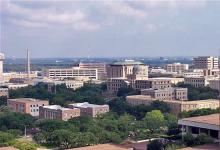Columbia County, Georgia: Community And Network Grow Together
Local officials in Columbia County, Georgia, wanted better public safety communications, synchronized traffic signals, and better connectivity for government facilities. They decided the best strategy was a publicly owned network and their decision is creating opportunities they hadn't anticipated.
When he considers how the county expanded its fiber network to improve economic development, education, and public savings, Columbia County Broadband Utility (C3BU) Broadband Manager Lewis Foster still sounds a little surprised. After all, Columbia County planned on using the network for a limited purpose, but then they realized the diversity of the asset. "It was almost an afterthought," he says.
Poor Options Created A Positive Path
Before the idea of a publicly owned network saw the light of day in Columbia County, local leaders contacted the incumbent providers to set up a dark fiber lease. To their dismay, incumbents AT&T, Comcast, and WOW, would not lease the county dark fiber.
County officials approached incumbents in 2007 and 2008 hoping to secure a dark fiber lease. The large providers, however, said they either didn’t have any dark fiber to lease, they could offer lit services, or they would build a dark fiber network for the county to use. Incumbents demanded a model where the county would pay the construction costs but the infrastructure would be owned and operated by the incumbents – who would then charge the County for access to the network the county had paid for. Foster recalls that incumbents we’re most interested in charging premium rates for lit services. Columbia County officials wanted a better option and found a more fiscally responsible approach in simply owning the network.



